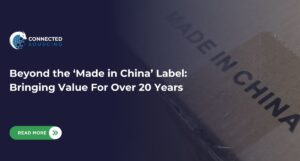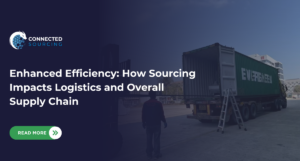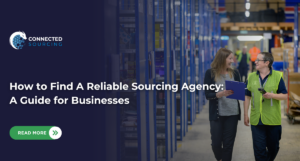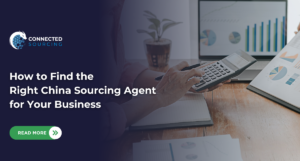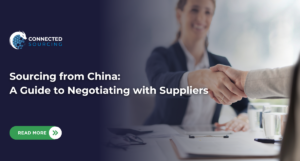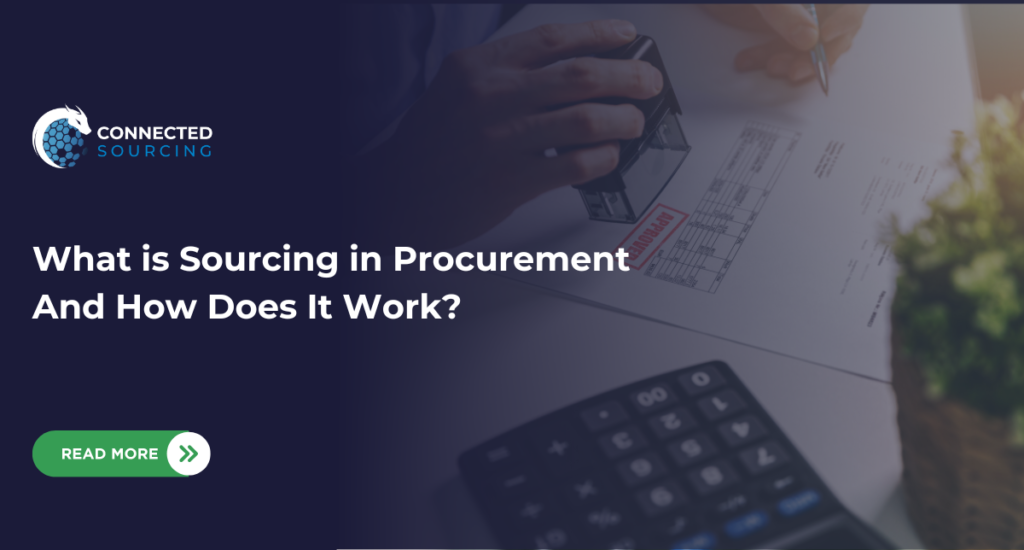
No matter the size or nature of your business, there is no doubt that you will need to invest heavily in goods and services. As such, many industries have begun to turn to a supply chain sourcing service in order to simplify the whole procurement process – but what is sourcing and how does it really work?
Sourcing materials can be a time-consuming and challenging process, depending on the availability and rarity of your needs. However, many new and startup organizations may not be aware of what is sourcing in supply chain and the associated benefits of having a great sourcing strategy.
That’s why it’s essential to define sourcing first and understand the rationale of the different sourcing processes for your business. This way, you’re organization can save a lot of time, money, and resources while ensuring that you’re getting the best products and services for all your needs.
What is Supply Chain Sourcing?
Sourcing supply chain is a critical process for any business looking to obtain quality products while achieving the best financial benefit. It involves researching and evaluating potential sourcing vendors, negotiating deals, and ultimately selecting the supplier that will best meet your day-to-day needs and keep your company competitive in the market.
By taking the time to properly source suppliers, businesses can ensure that they are getting the best value for their money in order to earn their target profit.
What is Strategic Sourcing?
The goal of the strategic sourcing process is significantly different from a simple sourcing process, as it focuses more on creating a sustainable procurement plan. Rather than focusing solely on making a great deal with a supplier, strategic sourcing involves developing a comprehensive strategy that takes into account various factors that can affect the sourcing decision.
These factors may include
- The materials and methods used to create the product.
- Whether suppliers adhere to relevant regulations and certifications
- Labor practices and conditions of a potential supplier
- Sustainability in terms of environmental and social issues
- All these elements should be taken into consideration when choosing a supplier for your business, and not the price alone.
Sourcing vs Procurement Process
Both sourcing and procurement go hand in hand as the subsequent goal of looking for a supplier is to procure their goods or services. However, there is a distinct difference between procurement and sourcing tasks – sourcing involves the processes and strategies used to identify potential suppliers, while procurement is the act of actually acquiring their goods or services.
Specialists in sourcing and procurement strategy are responsible for developing and implementing strategies to ensure efficient and cost-effective material sourcing. These include
Sourcing
- Determining what the company needs.
- Assessing the current state of the marketplace
- Evaluating and identifying potential suppliers
- Selecting the perfect supplier
- Negotiating a deal and managing vendor relationships
Procurement
- Reviewing purchase requisition
- Submitting purchase order to your supplier
- Monitoring deadlines to expedite the procurement process
- Communicating with the supplier to observe the quality of goods
- Tracking logistics
- Receiving products and invoice processing
To put it simply, the procurement process builds upon the groundwork established during the sourcing stage to make sure that the purchased materials are received properly in accordance with the agreed-upon quantity and quality.
What is the Sourcing Process?
After collecting data and determining what your company needs, here are the next steps in the supply chain sourcing process:
1 Evaluating Suppliers: Finding the perfect supplier for your business can take some time, depending on various factors such as your budget and availability of the materials you’ll be needing.
Moreover, it is essential to build trust with a supplier since they will be closely working with you and have a huge impact on your organization. Therefore, there are a few questions you’ll want to ask them to make sure they are the right business partner for you:
- What are their offered products, and are they available?
- Do they have responsive and helpful customer service?
- Are they able to produce and meet your demands?
- How is their reputation in the marketplace?
- How long have they been in operation?
- How flexible are their order time?
- How much are they willing to negotiate for prices?
- How long is their delivery time?
2 Acquiring the Best Supplier: Once you’ve made a list of potential suppliers based on your criteria, the next step in vendor sourcing is securing the one with the best deal. How do you do this?
Thoroughly research the supplier
To ensure that you make the best decision when considering a supplier, it is important to research their reputation. Start by checking their online presence, such as their social media accounts, to see if any customers have left reviews.
Customers are usually quite vocal when it comes to leaving reviews, so this information can prove to be invaluable in determining whether or not you should work with a supplier.
Negotiate an advantageous deal
Once you have narrowed down your choices, it is now time to negotiate a mutually beneficial agreement. Consider each supplier’s offer carefully and determine which one can best meet your needs and expectations.
Agree on the payment terms and conditions
Part of the discussion before signing a contract should include determining the payment terms. It is essential to discuss and define all expectations clearly to avoid any misunderstandings or issues when payment time arrives. Doing so can help ensure a smooth and successful transaction.
Identify delivery expectations
It is essential to ensure that the supplier you select is able to meet your needs in a timely and satisfactory manner before signing any contracts. Be sure to discuss your expectations and negotiate a favorable deal prior to committing to any agreement.
3 Deciding on Delivery Models: There are supplier delivery models you can choose from when deciding on delivery expectations.
Continuous Replenishment Model
In this model, suppliers make deliveries based on your company’s current inventory and real-time demands. These are usually scheduled in short intervals and in small batches, as larger batches can be more expensive and time-consuming.
This helps ensure that your company always has the necessary products and materials on hand to meet the demand of your customers.
Just-in-time Delivery Model
This model promotes efficiency by delivering supplies only when needed, thereby preventing excessive inventories and waste.
On-demand Delivery Model
Lastly, the on-demand model allows suppliers to deliver products only when customers demand them. It is essential that the supplier is able to provide the necessary flexibility to accommodate changes in order times, should the need arise.
4 Creating a Contract: Lastly, after discussing and agreeing on the mentioned considerations with the supplier, it is now time to create a contract between your company and them. This contract should include all agreed-upon conditions such as payment terms, delivery models, the contract length, and the actions to be taken if either party breaches the contract.
This will ensure that both parties can fulfill the agreement based upon mutual expectations of each other.
What is the Sourcing Process?
Assessing the effectiveness of your overall sourcing strategy will require you to consider the type of sourcing resources you will need to deploy in order to achieve your organization’s long-term objectives. These typically include but are not limited to
1 Outsourcing: This strategy involves hiring a third-party service to perform the sourcing and procurement process for your company. With the help of these specialists, you can benefit from their expertise and network in the market, allowing you to take advantage of the best deals and the most reliable suppliers.
This ensures that your company gets the highest quality materials and products at the most cost-effective prices.
2 Insourcing: Insourcing is an attractive option for many organizations, as it allows them to utilize their existing workforce to meet their daily procurement needs.
This type of resource management often proves to be more cost-effective and provides for easier monitoring and oversight of the entire procurement process.
3 Near-sourcing: This procurement strategy allows businesses to station their operations near the target market, which can help to reduce transportation costs.
By sourcing, manufacturing, and supplying in one place, such as a warehouse, businesses can gain better control over their finances and streamline their production process.
4 Vertical Integration: This strategy involves merging two or more companies from the same industry in order to achieve greater efficiency and smoother sourcing and procurement management. By consolidating resources, costs can be reduced, and economies of scale can be achieved.
Additionally, through the combination of expertise and resources, better quality products and services are expected to be produced and distributed.
5 Joint Ventures: Unlike vertical integration, where different companies from different owners are merged, joint ventures are businesses that are created by two or more entities with shared ownership and management.
This means that the parties involved share both the benefits and the risks associated with the venture.
The Importance of Sourcing in Business
Having a well-crafted supply chain sourcing strategy is critical for businesses to maximize their profits and have a competitive advantage in the market. It consists of various steps that can help ensure that you’re getting the desired profit margins according to your goals.
Additionally, a sound sourcing strategy can help reduce risks associated with supply chain disruptions and delays, thus helping you identify and secure the most cost-effective options available out there!


